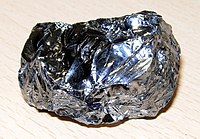
Photo from wikipedia
Abstract Cells and tissues exhibit complex mechanical behaviour, including large deformations, migration, growth, cell proliferation and death, as well as changes in behaviour due to external factors (e.g. chemical signals).… Click to show full abstract
Abstract Cells and tissues exhibit complex mechanical behaviour, including large deformations, migration, growth, cell proliferation and death, as well as changes in behaviour due to external factors (e.g. chemical signals). The discrete element method is well suited for modelling such complicated behaviour, but computational efficiency is difficult to achieve due to the large number of particles needed for discretisation. Most of the mechanical behaviour of cells and tissues takes place slowly enough that it can be considered a quasi-static process. Taking this into account, we developed very efficient algorithms which ensure solution convergence and greatly reduce the computation time; these include an efficient neighbour search algorithm, explicit time integration with dynamic relaxation and stability control using mass scaling. In this paper we describe these algorithms and evaluate their performance using several numerical experiments. We demonstrate how some complex phenomena (constant tension membrane, growth, tissue degradation) can be easily modelled using the proposed methods.
Journal Title: Engineering Analysis with Boundary Elements
Year Published: 2019
Link to full text (if available)
Share on Social Media: Sign Up to like & get
recommendations!